Related Information
HVAC Unit Makes a Dripping SoundHeating System Doesn't Warm the House Evenly
Air Conditioner Has a Burning Plastic Smell
HVAC System Vibrates or Jolts on Startup
Cold Spots in Certain Areas of the House
Thermostat Causes HVAC to Short Cycle
Air Conditioner Compressor Is Overheating
HVAC Ducts: Recognizing & Removing Bad Odors
Furnace Pressure Switch Problem
Air Conditioning Unit Icing Up
Need Help?
Not sure what you need? We’re here to help—no pressure, no jargon, just clear, friendly advice to find the best solution for your home.
Furnace Ignitor Problems
Dealing with furnace ignitor problems, heater, pilot lights, and flame sensor can be frustrating, especially during the colder months. common problems like furnace problem and no heat production can disrupt daily life. Understanding the common causes and solutions for furnace ignitor problems, pilot light, and safety issue is crucial for maintaining a comfortable living environment. This blog post aims to shed light on troubleshooting methods and preventive measures to tackle common problems with furnace ignitor malfunctions effectively.
Whether it’s a faulty ignitor or an issue with the electrical system, identifying the root cause is essential in resolving these problems. By exploring various symptoms and potential remedies, homeowners can gain valuable insights into addressing furnace ignitor issues promptly. Stay tuned as we delve into practical tips for diagnosing and rectifying furnace ignitor problems.
Understanding How a Furnace Ignitor Works
The Role of a Furnace Ignitor
A furnace ignitor plays a crucial role in initiating the combustion process within a furnace. When the thermostat signals for heat, the ignitor is activated to begin the heating cycle. It utilizes an electric current to generate intense heat, which is then used to ignite the gas or fuel mixture in the furnace. This ignition process is essential for creating the necessary conditions for proper heating and warmth within homes.
The ignitor’s responsibility is not only limited to starting up the furnace but also ensuring that it continues running efficiently throughout its operation. Without this vital component, your furnace would be unable to produce heat effectively, leading to discomfort and potential safety hazards during colder months.
Basic Functionality of a Furnace Ignitor
Understanding how a furnace ignitor works can be pivotal when troubleshooting problems related to your home’s heating system. Typically, there are two primary types of ignitors: hot surface ignitors and spark ignitors.
Hot surface ignitors use electrical resistance heating elements that glow red-hot upon receiving an electric current. This glowing element then transfers its heat energy directly to ignite the gas as it flows into the combustion chamber.
On the other hand, spark ignitors create sparks using electricity, which then lights up the gas as it enters into contact with these sparks. Both types serve similar functions but operate differently based on their design and mechanism.
When diagnosing problems with your furnace’s ignition system, understanding whether you have a hot surface or spark-type ignitor can help pinpoint specific issues more accurately.
Recognizing Signs of a Faulty Furnace Ignitor
Lack of Heat
If the furnace is on but there’s no heat, it could indicate a faulty furnace ignitor. Even though the furnace is running, a malfunctioning ignitor may fail to initiate the heating process. This can lead to cold indoor temperatures despite the system being powered on and running.
A visible crack or damage on the ignitor itself can be a clear indication of an issue. When inspecting your furnace, take note of any physical damage to this crucial component. If you notice any cracks or signs of wear and tear, it’s likely that the ignitor needs attention or replacement.
Frequent On-and-Off Cycling
Another warning sign to watch out for is frequent on-and-off cycling of the furnace. If you observe your heating system turning on and off more frequently than usual, it might be due to a problematic furnace ignitor. The constant cycling could signify that the ignitor is struggling to maintain consistent operation, leading to interruptions in heat production.
When examining these signs within your home’s heating system, remember that issues with other parts or components may also mimic similar symptoms as those caused by a faulty ignitor. However, if you notice these specific indicators alongside each other – such as lack of heat when the furnace is running and visible damage to the ignitor, or frequent cycling along with damaged components – then it becomes increasingly likely that there’s an issue with this essential part.
Troubleshooting a Furnace That Won’t Ignite
Power Supply Issues
If your furnace is not igniting, the first step is to check for furnace ignitor problems related to power supply. Ensure that the ignitor is receiving electricity by examining the circuit breaker or fuse connected to the furnace. Sometimes, a tripped breaker or blown fuse can disrupt the power supply, preventing the ignitor from functioning properly. Use a multimeter to test if there’s an electrical current reaching the ignitor.
It’s essential to mention that neglecting this issue can lead to complete heating system failure in severe cold weather conditions. Therefore, it’s crucial to address any potential power supply issues promptly.
Debris and Dirt Obstruction Another common cause of furnace ignitor problems involves dirt and debris obstructing its function. Over time, dust particles and other contaminants may accumulate around the ignitor, hindering its ability to spark and ignite fuel efficiently. To resolve this issue, carefully clean any accumulated debris using a soft brush or cloth. Gently remove any dirt buildup without damaging the delicate components of the ignition system.
Gas Supply Verification To rule out fuel-related problems causing your furnace ignition issues, verify if natural gas is reaching your furnace effectively through its gas line. Check if all gas valves leading up to your heating system are open and functioning correctly; closed valves will prevent natural gas from reaching your furnace altogether.
It’s important not only for ensuring proper heating but also for safety reasons since inadequate gas supply can result in carbon monoxide leaks – posing serious health risks.
Diagnosing Clicking Noises from the Furnace
Faulty Ignition System
Clicking noises coming from the furnace can be a sign of furnace ignitor problems. These clicking sounds often indicate that the ignition system is attempting to ignite, but it’s not successful. This repeated clicking may seem like an annoyance, but it’s crucial to address this issue promptly to prevent further damage to the furnace.
A faulty ignition system can lead to several issues with the furnace. When you hear clicking noises, it could mean that the ignitor is malfunctioning and failing to light up as needed. The ignitor plays a critical role in starting the combustion process within your furnace by creating a spark or heating up to ignite the gas or oil. If this component doesn’t function properly, it can disrupt the entire heating process.
Addressing these clicking noises promptly is essential because allowing them to persist without intervention could lead to more extensive damage and potentially costly repairs down the line.
Temperature Requirement Issues
One common reason for these clicking noises is an ignitor that fails to reach the necessary temperature for ignition. This problem might occur due to various factors such as wear and tear over time or electrical malfunctions within the ignitor itself.
When faced with temperature-related issues, homeowners might notice their furnaces making repeated attempts at ignition without success. It’s important not only for maintaining comfort at home but also for safety reasons, as unresolved issues with an ignition system could pose risks such as gas buildup or carbon monoxide leaks.
To mitigate these potential hazards and ensure efficient functioning of your furnace, addressing any problems related to furnace ignitors becomes imperative.
Causes and Effects of Furnace Ignitor Failure
Dust and Debris Accumulation
Dust and debris accumulation can lead to furnace ignitor failure. When the furnace is not in use, dust particles settle on the ignitor’s surface. Over time, this buildup can prevent the ignitor from functioning properly. As a result, when the furnace attempts to ignite, it may struggle due to the obstructed surface of the ignitor.
Debris such as pet hair or lint can also find its way into the furnace assembly. These foreign materials might accumulate around the ignitor, affecting its performance and leading to potential malfunction.
Extreme Temperature Changes
Extreme temperature changes can cause stress on the furnace ignitor, ultimately resulting in its failure. When a furnace experiences rapid fluctuations in temperature, especially during start-up or shut-down cycles, it puts strain on various components including the ignitor.
For example: During cold weather conditions, when a dormant furnace is suddenly activated for heating purposes, there is a significant change in temperature within a short period. This abrupt shift adds pressure on the already fragile components like an old or worn-out ignition system, potentially causing them to fail prematurely.
Old Age and Wear
The age of a furnace igniter plays a crucial role in its functionality. Over time, wear and tear gradually degrade its performance until it eventually fails altogether. The constant heating up and cooling down processes weaken even durable materials over extended periods.
Moreover: An older ignition system that has been subjected to numerous heating cycles becomes more susceptible to damage compared to newer ones with minimal usage history.
Steps to Take When Your Furnace Ignitor Isn’t Igniting
Turning Off Power
Before attempting any steps to address furnace ignitor issues, it’s crucial to prioritize safety by turning off the power to the furnace. This ensures that you can work on the system without any risk of electrical shock or injury. Locate the circuit breaker for your furnace and switch it off before proceeding with any troubleshooting.
Inspecting and Cleaning Once the power is safely turned off, carefully inspect the ignitor for any signs of damage or wear. Look out for cracks, charring, or other visible issues that could indicate a problem. Ensure that there are no obstructions blocking the ignitor’s function such as dirt, dust, or debris. Use a soft brush to gently clean away any buildup and ensure that the ignitor is free from any hindrances.
Testing Other Components If cleaning doesn’t resolve the issue with your furnace ignitor not igniting, it’s important to consider testing other components within your heating system. Begin by checking the thermostat settings to verify if they are correctly configured and communicating with the furnace. Ensure that there are no programming errors or malfunctions causing issues with ignition.
Furthermore, examine the gas valve to confirm whether it is open and functioning properly. A closed gas valve can prevent fuel from reaching the burners even if all other components are working correctly. By methodically testing each component beyond just cleaning the ignitor itself, you can identify potential underlying causes of ignition problems in your furnace.
Lifespan and Replacement Frequency of Furnace Ignitors
Typical Lifespan
Furnace ignitors generally have a lifespan of 3 to 5 years under normal usage conditions. This means that with regular use and proper maintenance, homeowners can expect their furnace ignitor to function effectively for several years before needing a replacement.
Factors such as the frequency of use also play a crucial role in determining the longevity of a furnace ignitor. For instance, if a homeowner frequently operates their furnace during colder months or in regions with extended winters, the ignitor may wear out more quickly compared to those used sporadically.
Impact of Environmental Conditions
Moreover, environmental conditions can significantly impact the replacement frequency of furnace ignitors. For example, homes located in areas with high humidity levels might experience quicker degradation of the ignitor due to moisture exposure. Similarly, households situated in dusty environments may find that dust accumulation affects the performance and lifespan of the furnace ignitor.
Regular inspection and maintenance are essential practices that can help extend the lifespan of a furnace ignitor beyond its typical 3 to 5-year range. Homeowners should prioritize scheduling annual HVAC system inspections by professionals who can assess not only the condition of the ignitor but also other components critical for efficient operation.
In addition:
Annual professional inspections
Proper maintenance routines
Regularly changing air filters
Seeking Professional Help for Furnace Ignitor Problems
Certified Technician
When DIY troubleshooting fails to fix furnace ignitor problems, it’s crucial to seek professional HVAC service. A certified technician possesses the expertise to accurately diagnose and repair complex ignitor issues. They have the necessary training and experience to handle various types of furnaces.
Professional intervention is essential as it ensures the safe handling of electrical components within the furnace system. This minimizes the risk of accidents and damage that could result from mishandling delicate parts. Moreover, a skilled technician can identify underlying problems that might not be apparent during DIY inspections.
Proper Diagnosis
A common problem with furnace ignitors is their susceptibility to wear and tear over time. While homeowners may attempt basic troubleshooting, such as cleaning or repositioning the ignitor, more intricate issues often require professional attention. For example, a malfunctioning control board or faulty wiring could contribute to ignitor failures.
Seeking professional help guarantees an accurate diagnosis of the root cause behind furnace ignitor problems. This allows for targeted repairs rather than temporary fixes that may overlook underlying issues.
Certified technicians also possess in-depth knowledge about different types of furnaces and their specific ignition systems. Whether dealing with hot surface or spark ignition systems, they can efficiently troubleshoot and rectify problems unique to each type.
Safety Measures
When faced with persistent ignitor problems, enlisting professional assistance ensures safety during repairs or replacements. Handling electrical components within a furnace system requires precision and caution due to potential hazards associated with live wires and high voltages.
By engaging experts, homeowners mitigate risks related to electrical shocks, short circuits, or accidental damage caused by improper handling of sensitive equipment like control boards or flame sensors.
In addition:
Professional intervention provides peace of mind knowing that all safety protocols are adhered to during diagnostic procedures.
Technicians follow industry best practices when working on complex heating systems which further reduces any potential safety hazards.
Preventive Maintenance to Avoid Furnace Ignitor Issues
Regular Inspection and Cleaning
Regularly inspect and clean the furnace ignitor as part of routine maintenance. Dust, dirt, or debris can accumulate on the ignitor over time, affecting its performance. By inspecting and cleaning it regularly, homeowners can ensure that the ignitor functions optimally when needed. For example, using a soft brush to gently clean the ignitor’s surface can help prevent buildup that may interfere with ignition.
Ensuring Proper Ventilation It’s essential to ensure proper ventilation around the furnace to prevent overheating of internal components, including the ignitor. Adequate airflow prevents excessive heat buildup within the furnace system, which can lead to premature wear and tear on various components, including the ignitor. Homeowners should keep vents unobstructed and clear of any blockages to maintain optimal airflow around the furnace.
Schedule Annual HVAC Inspections
Scheduling annual HVAC inspections is crucial for identifying potential issues before they escalate into major problems. During these inspections, a professional technician will thoroughly examine all aspects of the HVAC system, including the furnace ignitor, ensuring that it is in good working condition. These inspections provide an opportunity for technicians to address any emerging concerns promptly.
Closing Thoughts
Understanding the intricacies of a furnace ignitor and being able to recognize the signs of malfunction are crucial for homeowners. Troubleshooting and diagnosing issues, understanding the causes and effects of failure, and knowing when to seek professional help or perform preventive maintenance can save time, money, and discomfort. By being proactive and informed, individuals can ensure their furnace functions optimally, maintaining a comfortable living environment.
For further insights on maintaining a well-functioning furnace and troubleshooting common problems, homeowners can consult professional HVAC technicians or refer to reputable resources in the field. Staying informed and proactive about furnace maintenance not only ensures a cozy home but also contributes to the longevity of the heating system.
Frequently Asked Questions
How does a furnace ignitor work?
A furnace ignitor works by producing a spark or heating up to ignite the gas in the furnace. When the thermostat calls for heat, the ignitor is activated, initiating the combustion process.
What are the signs of a faulty furnace ignitor?
Signs of a faulty furnace ignitor include no heat production, frequent cycling on and off, and visible damage such as cracks or breaks.
How can I troubleshoot a furnace that won’t ignite?
You can troubleshoot a furnace that won’t ignite by checking for power supply issues, inspecting the thermostat settings, and examining the condition of the ignitor itself.
What causes clicking noises from the furnace?
Clicking noises from the furnace may be caused by issues with ignition components like the gas valve or an intermittent electrical connection.
How often should I replace my furnace ignitor?
The frequency of replacing a furnace ignitor depends on usage and maintenance but typically ranges from every 3 to 5 years due to wear and tear. Regular inspection can help determine when replacement is necessary.
Real Reviews
Our Primary Services
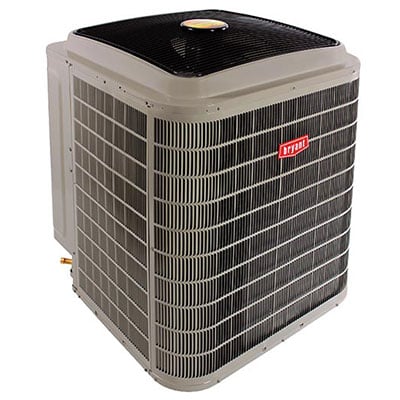
Heat Pump Services
Optimize your home’s energy efficiency with our expert heat pump installation, maintenance, and repair services.
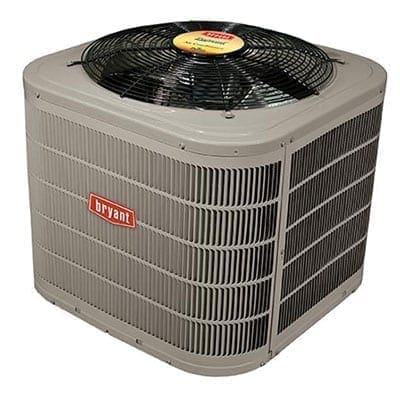
AC Services
Stay cool and comfortable with our professional air conditioner installation, maintenance, and repair services.
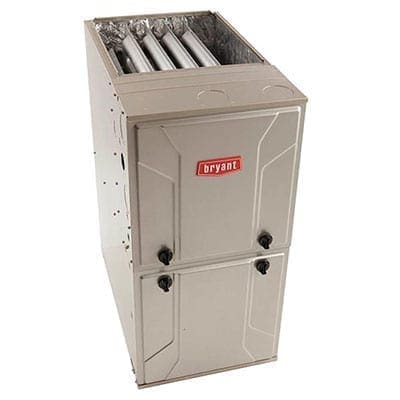
Furnace Services
Ensure your home stays warm with our reliable furnace installation, maintenance, and repair services.
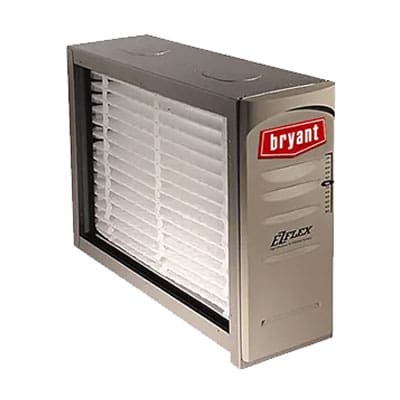
Air Quality Services
Enhance your home’s air quality with our expert air filtration and purification system installation, maintenance, and repairs.
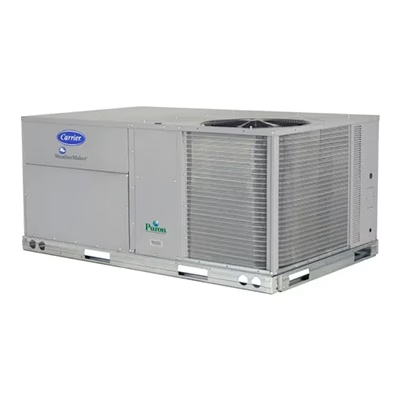
Commercial Services
Maximize your building’s energy efficiency with our expert heat pump installation, maintenance, and repair services.
Service Details
Ensure optimal climate control and energy efficiency in your commercial spaces with our comprehensive HVAC services. We specialize in the installation, maintenance, and repair of heating, ventilation, and air conditioning systems. Our experienced technicians provide tailored solutions to meet the unique needs of your business, ensuring a comfortable and productive environment year-round.
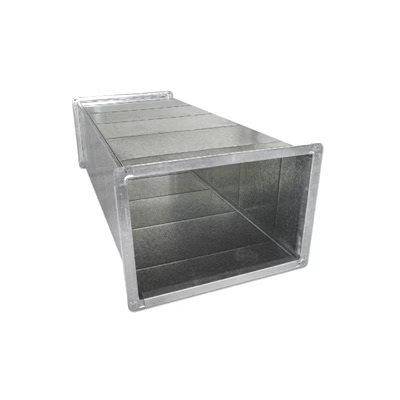
Ductwork Services
Improve your home or building’s energy efficiency with our expert ductwork installation, and repair services.
Not Seeing What You Need?
Contact Us For Customized HVAC
Solutions or Any HVAC Questions
Serving the Greater Portland Area
Our Service Area


